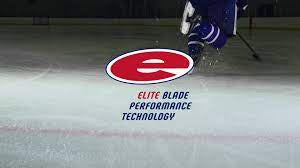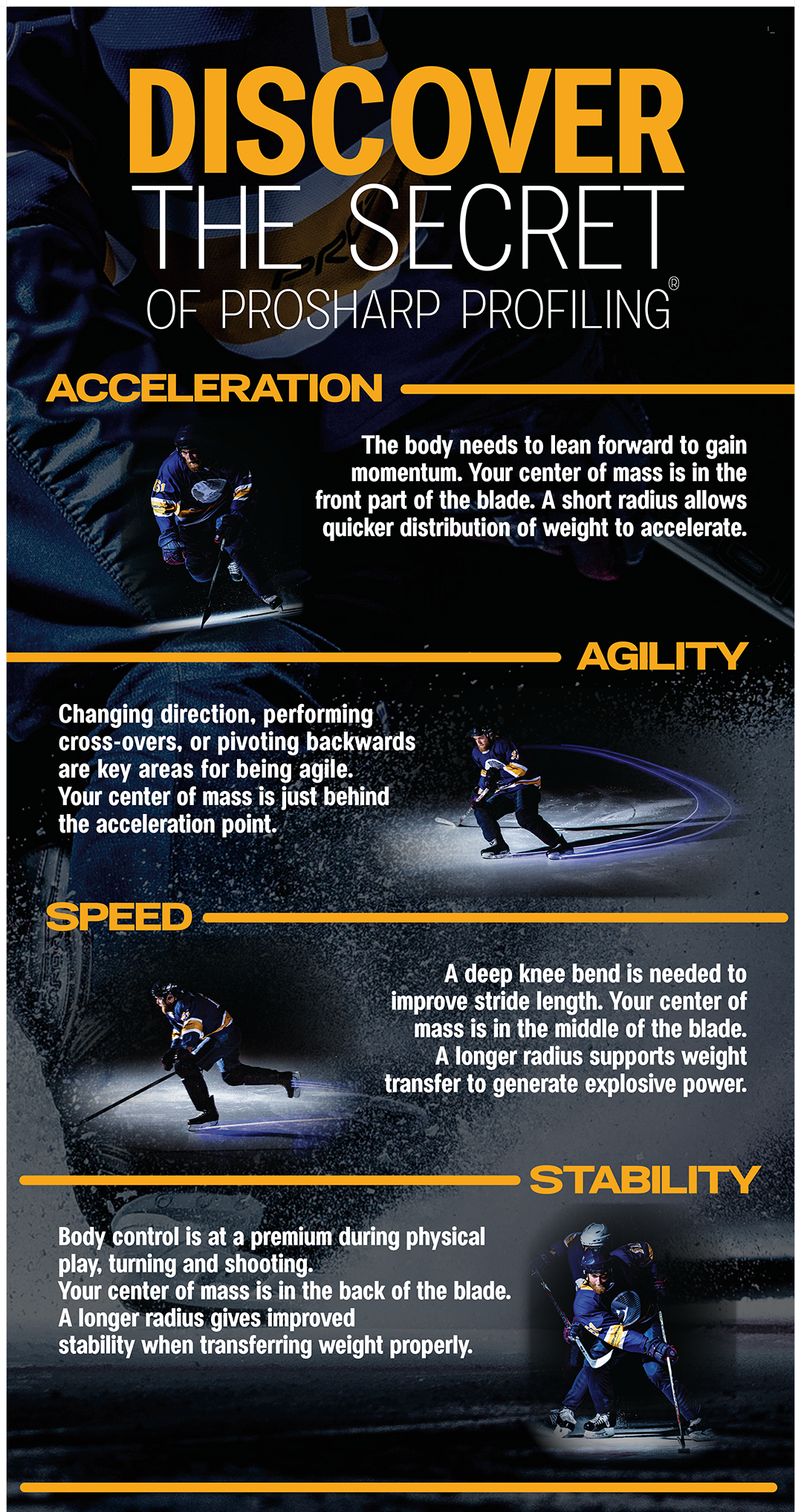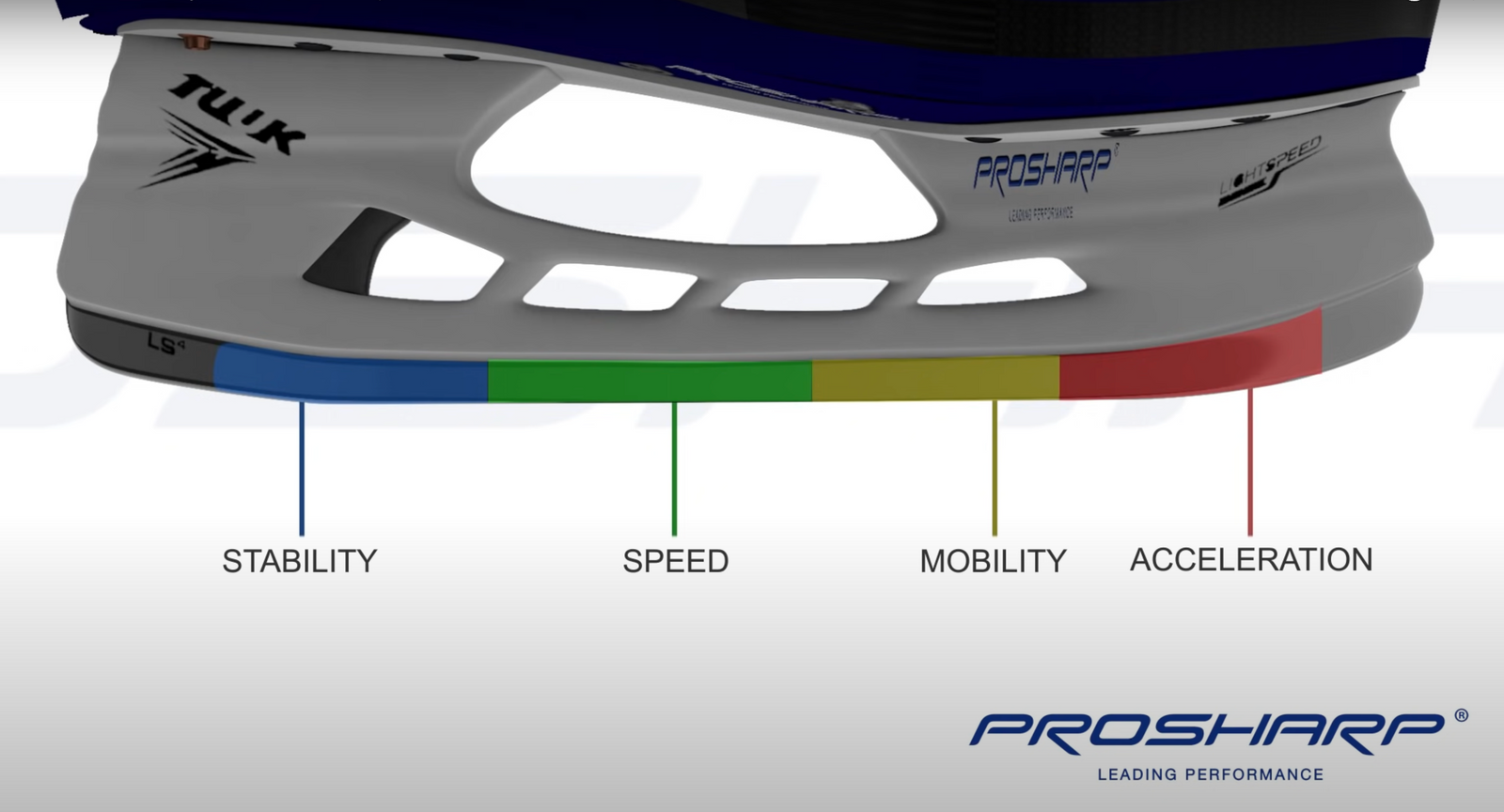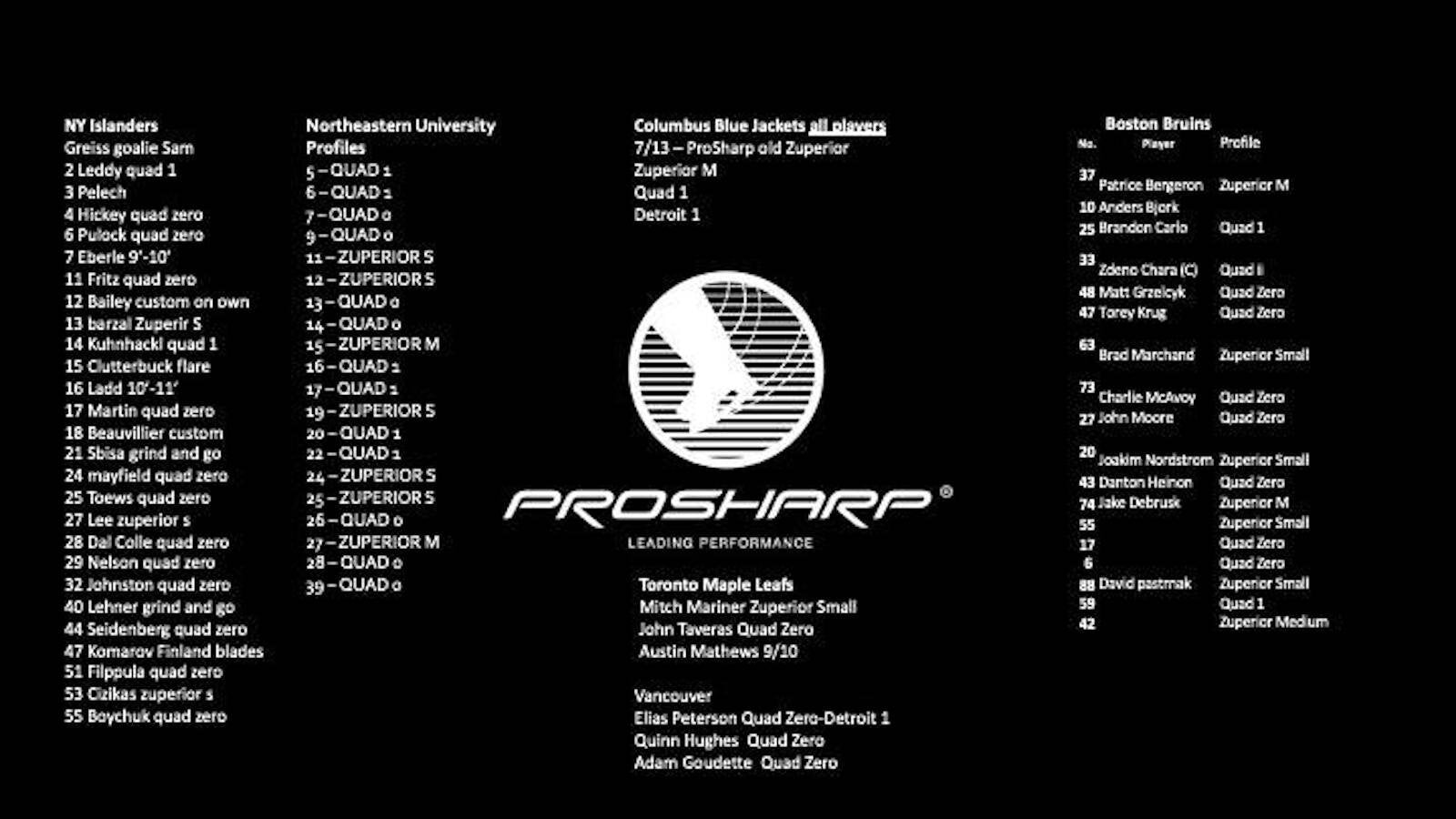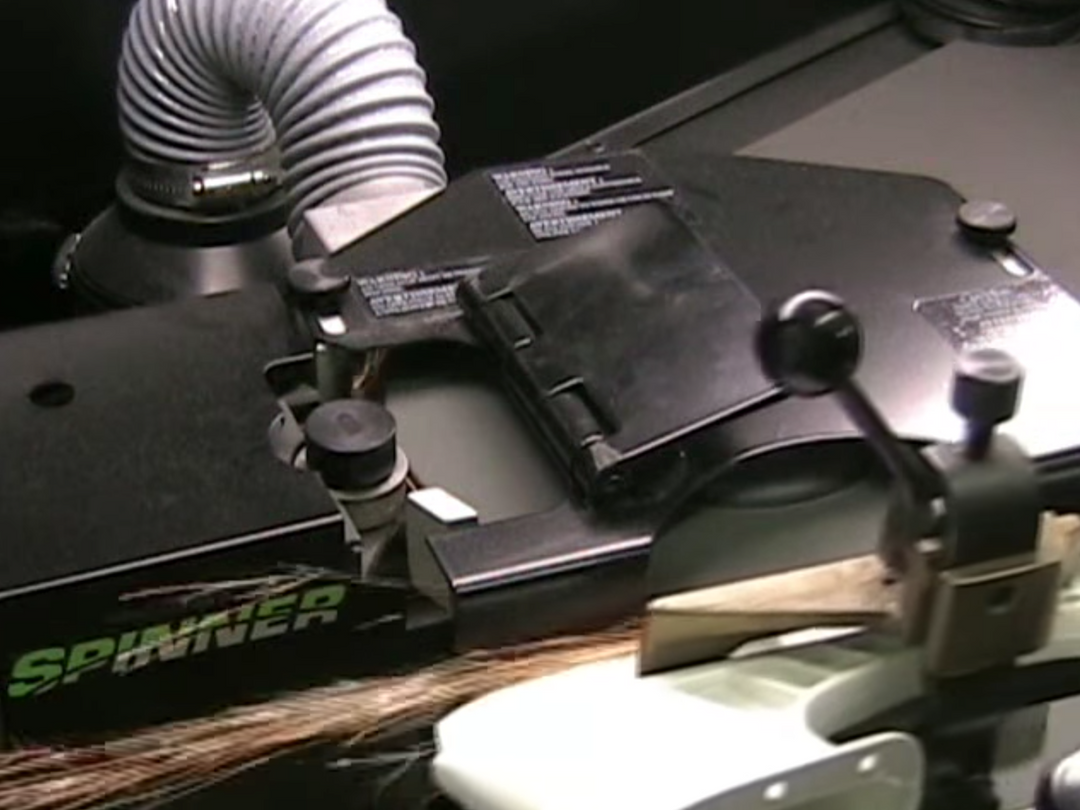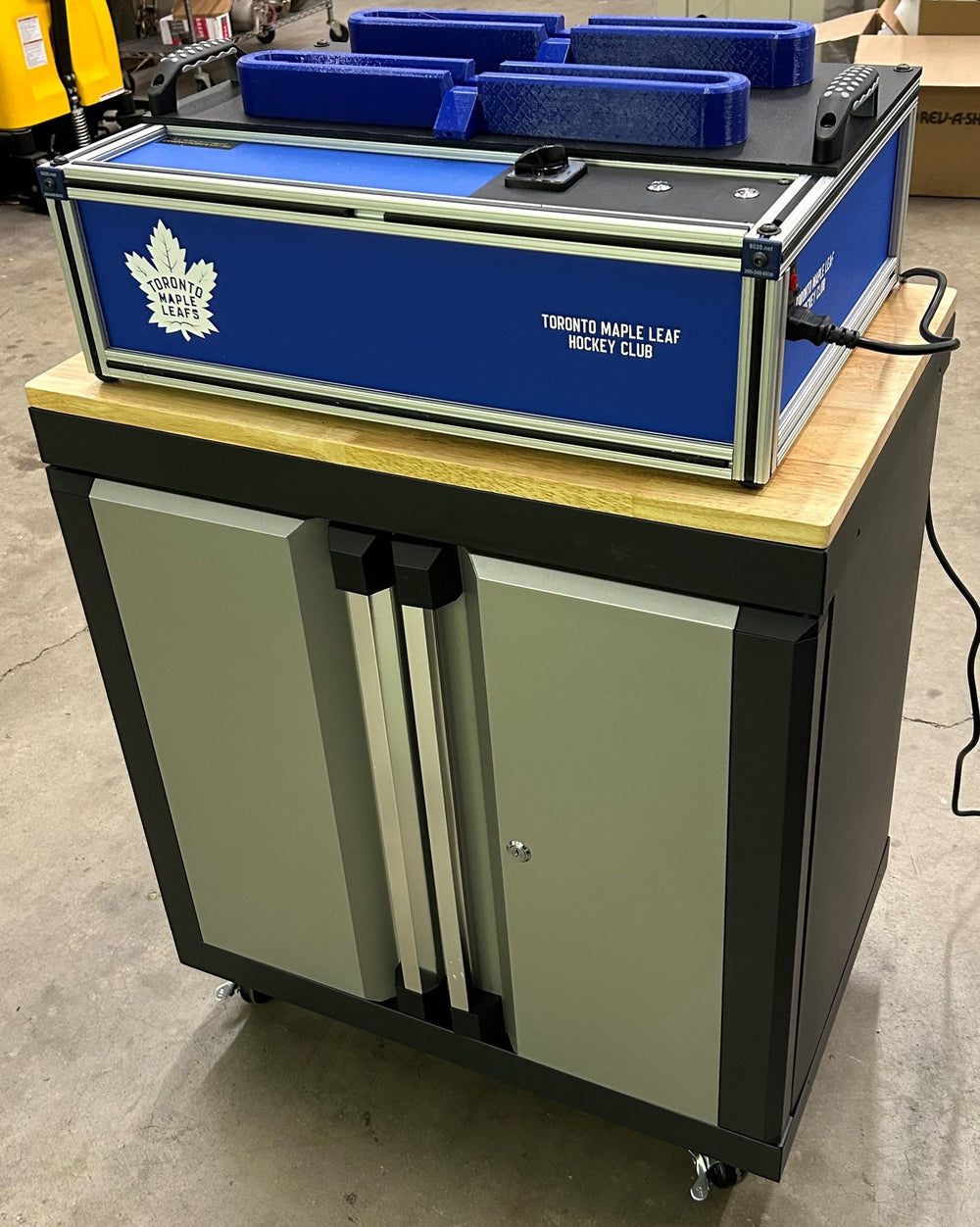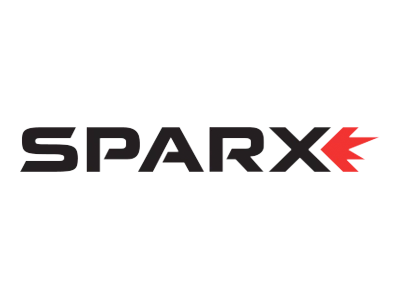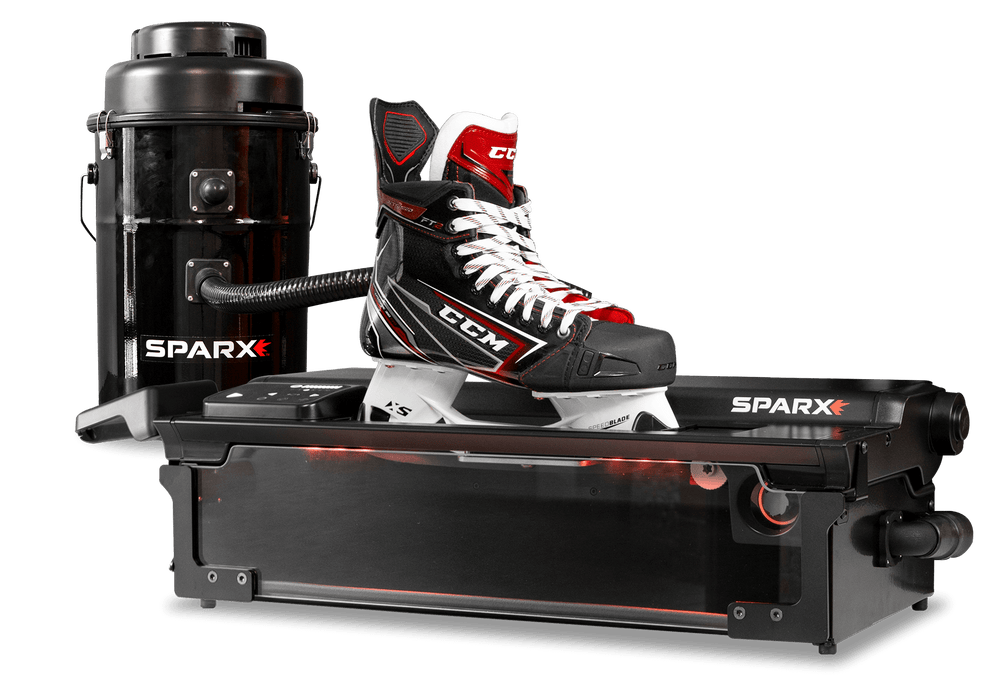Profile Categories
DOUBLE RADIUS (COMBINATION) PROFILES
Double radius profiles are designed with two different radii to provide better acceleration with very good stability. Double radius profiles can be pitched to the skaters preference. See more details on double radius templates. Notable players that have been known to skate on a double radius template are Austin Matthews (9’-10’). Order your double radius profile here.
- Detroit 1 (10 ft – 20 ft)
- Detroit 2 (13 ft – 26 ft)
- Win 1 (9.5 ft – 10.5 ft)
- Win 2 (10 ft – 11 ft)
- Combi 10 – 13 (10 ft – 13 ft)
- Combi 7 – 13 (7 ft – 13 ft)
- Combi 9 – 10 (9 ft – 10 ft)
- Toronto 1 (7 ft – 10 ft)
- Toronto 2 (9 ft – 15 ft)
- Toronto 3 (11 ft – 17 ft)
TRIPLE RADIUS PROFILES
Triple radius profiles are designed with three different radii's to enhance acceleration, provides quicker turns, and provides proper stability to help escape opponents. The Zuperior profile is recommended for players who want extra speed. Ideal for wingers that would quick acceleration with perfect stability. Excellent choice for small area players. See more details on triple radius templates.
Notable players that have been known to skate on Zuperior profiles are Mitch Marner, Brad Marchand, Anders Lee, and Matthew Barzal.
Zuperior triple radius templates have forward pitch built in by moving the blades pivot point to the rear. The Zuperior 3XS moves the pivot point 12 mm, Zuperior XXS moves the pivot point 15 mm, Zuperior XS moves the pivot point 17 mm, Zuperior S, M, L, and V move the pivot point 20 mm.
Glide surface and Hudson profiles are old school templates with a flat spot. The flat spot and pivot points of these profiles can be adjusted to provide pitch to the skater. Other popular profilers can add a flat spot to your blades though do not adjust the radius or ensure it is correct. Glide surface and Hudson profiles offer the best of both words in that they add the flat spot though also profile the rest of the blade as well.
The pitch of profiles can be customized to neutral or the skaters preference. Contact us for a consultation if you have any questions. Order your triple radius profile here.
- Zuperior 3XS (5-9-13 ft, 212-221, 12mm pitch)
- Zuperior XXS (5-10-13 ft, 230-238, 15mm pitch)
- Zuperior XS (5-11-13 ft, 246-254, 17mm pitch)
- Zuperior Small (6-12-20 ft, 246-263, 20mm pitch)
- Zuperior Medium (6-13-20 ft, 272-288, 20mm pitch)
- Zuperior Large (6-14-20 ft, 296-312, 20mm pitch)
- Zuperior V (6-17-20 ft, 296-312, 20mm pitch)
- Hudson 1 (8-40-12 ft, 20-20 comparable)
- Hudson 2 (8-50-12 ft, 25-25 comparable)
- Hudson 3 (8-50-11 ft, 25-25 comparable)
- Hudson 4 (8-60-13 ft, 30-30 comparable)
- Hudson 5 (9.5-50-10.5 ft, 25-25 comparable) - Comparable to Maximum Edge 981
- Glide Surface 40 (11-40-11 ft, 20-20 comparable)
- Glide Surface 50 (11-50-11 ft, 25-25 comparable)
- Glide Surface 60 (11-60-11 ft, 30-30 comparable)
- Glide Surface 65 (11-65-11 ft, 32.5-32.5 comparable)
Quad Radius Profiles
Quad profiles are designed with four different radii's which are strategically placed on the same blade profile to provide perfect blade contact with the ice in ALL situations. Each section of the blade has a radius that is optimized for its specific use. The front of the blade has a smaller radius to promote quick steps during acceleration. The next section is optimized for mobility. The middle of the blade has a slightly longer radius for speed and glide. The back of the blade has a larger radius for stability.
The quad profile is recommended for players who need to cover a lot of ice. It is the ideal profile for centers and defense. You will feel balanced on your skates when transitioning from gliding to striding. This profile maximizes full stride length. See more details on quad radius templates.
Notable players who have been known to skate on the Quad profile are Elias Pettersson, Quinn Hughes, and John Taveras.
One of the most popular Quad profiles is the Quad Zero. Watch Elias Pettersson of the Vancouver Canucks on the ice testing this profile.
Quad templates have a built in forward pitch by moving the blades pivot point to the rear. Quad 3XS moves the pivot point 12 mm, Quad XXS moves the pivot point 15 mm, Quad XS moves the pivot point 17 mm, and Quad Zero, Quad 0.5, Quad I, and Quad II move the pivot point 20 mm. The pitch of profiles can be customized from neutral to the skaters preference.
Order your quad radius profile here.
-
Quad 3XS (4-5-7-10 ft, 212-221, 12mm pitch)
-
Quad XXS (5-7-9-11 ft, 230-238, 15mm pitch)
-
Quad XS (6-8-11-12 ft, 246-254, 17mm pitch)
-
Quad Zero (6-9-11-13 ft, 221-263, 20mm pitch)
-
Quad 0.5 (8-10-12-14 ft, 246-280, 20mm pitch)
-
Quad I (6-9-12-15 ft, 254-280, 20mm pitch)
-
Quad II (7-10-13-16 ft, 263-296, 20mm pitch)
Dynamic Ellipse Profiles
The ELLIPSE were released during October 2020. The new profiles revolutionize profiling by transferring the shape of an ellipse to the blade. This is a paradigm shift where we're going from radius profiling, which was introduced in the late 80's, to ellipse profiling. The focus is on providing the skater with the most DYNAMIC and SEAMLESS skating experience as possible. Combine maximum POWER with hyperlight AGILITY! The key feature is the seamlessness of the profiles. This gives the skater the feeling that they always have the optimal ice contact for each on-ice action.
See our post on Conor Bedard and the Ellipse profile.
Ellipse profiles have pitch built in by moving the blades pivot point to the rear. Senior profiles (0, 1, and 2) move the pivot point of 20 mm. Ellipse XS moves the pivot point 17 mm. Ellipse XXS moves the pivot point 15 mm. Ellipse 3XS moves the pivot point 12 mm. The pitch of profiles can be customized to neutral or to the skaters preference.
While the detailed specifications for Ellipse profiles the descriptions below should serve as a guide. In general, the Ellipse Zero shape will be closest to a circle of all the profiles and will have less ice contact than the Ellipse II. The Ellipse Zero will have more agility than the Ellipse II. As a recommendation if you skate on a Quad 0 then you should most likely start out by trying the Ellipse Zero. If you’re currently on a Quad 0, would like to move to the Ellipse and have more stability (ice contact) than try the Ellipse I. However, these are just recommended starting points. Contact us for a consultation if you have any questions. Order your dynamic profiler here.
-
Ellipse 3XS (Skate sizes 212-221, 12 mm pitch)
-
Ellipse XXS (Skate sizes 230-238, 15 mm pitch)
-
Ellipse XS (Skate sizes 246-254, 17 mm pitch)
-
Ellipse Zero - Elliptic value closest to zero (a circle) – also meaning it’s the shortest profile of them all. Currently making it the most agile in the series, while packing the dynamic punch that all Ellipse profiles do. We've taken inspiration from the Quad Zero on this one, making it best suited for skate sizes 7-8 (only a recommendation). (Skate sizes 263-272, 20 mm pitch)
-
Ellipse I - The in-betweener. Best suited for skate sizes 9-10 (only a recommendation) (Skate sizes 280-288, 20 mm pitch)
-
Ellipse II - Elliptic level furthest away from zero. Meaning it’s longer, making it more powerful, but still agile. Best suited for skate sizes 11-12 (only a recommendation) (Skate sizes 296-306, 20 mm pitch)
-
Goalie Ellipse (Youth Y6-Y13.5, 7 mm pitch)
-
Goalie Ellipse (Junior 1-6, 7 mm pitch)
-
Goalie Ellipse (Senior 7-12, 7 mm pitch)
Pro Skate Balance Cag Profiling
Pro Skate Balance Cag profiling is considered a glide zone or glide surface profile. This profile features add a flatter area under the middle of the blade to enhance glide and provide enhanced contact with the ice surface. These traditional profiles have been used for years by NHL players around the world.
Cag profiling is designed to optimally place a flat spot on the players runner in order to improve the following:
- Control and flow
- Turns and acceleration
- Blade contact and consistency
- Balance, stability, and agility
- Less fatigue
- Reduced risk of injury
See the following article on our Pro Skate Balance profiler.
What Do the Numbers Mean?
The Cag profile setting is made up of two numbers. The first number is the flat area in front of the runners center line and the second number is the flat area behind the runners center line. For example, 30/30 is a neutral profile with 30 mm of flat area in front of the center line and 30 mm of flat area behind the center line. This profile is considered neutral because there is equal flat area on both sides of the center line.

A 35/55 profile means that there is 35 mm of flat area in front of the runners center line and 20 mm behind the center line. This is considered a forward learning profile due to more flat area to the front of the center line.
This flat area is typically placed on part of blade that the player utilizes most during skating. For instance if the player is a more of a forward leaning skater, more of flat area can be positioned to the front of the center line versus the rear. This can optimize the skating area that the player utilizes the most for pushing and gliding.
Pro Players on Cag Profiles
The following table lists some popular NHL players and their glide surface profile. This listing is a small subset of the actual pro players that utilize this profiling technology. Keep in mind these are the settings of professional players and may not be appropriate for recreational skaters. For example, a 60 mm flat spot will likely be too much blade on the ice for the average skater. Consider the standard options in the next table for your corresponding blade size.
| Player | Profile |
| Sidney Crosby | 30-60 |
| Evgeni Malkin | 40-80 |
| Cale Makar | 15-30 |
| Nathan Mackinnon | 35-65 |
| Quinn Hughes | 35-55 |
| Alex Pietrangelo | 35-65 |
| Pascal Dupuis | 35-65 |
| Phil Kessel | 30-55 |
| Ron Francis | 35-65 |
| Matt Cullen | 30-55 |
| Sami Kapanen | 40-80 |
| Jordan Staal | 30-60 |
| Sergei Gonchar | 40-80 |
Popular Cag Profiling Options
The following table describes the list of basic profile options in this category. While these are the most popular you may choose to select custom options. Match up your size in the chart and choose between the neutral and forward options.
| Runner Size | Lean |
Profile Specification |
| Youth (10-13) | Neutral |
15-30 |
| Youth (10-13) | Forward |
15-25 |
| Junior (1-3, 212-230) | Neutral |
15-30 |
| Junior/Int (1-3, 212-230) | Forward |
15-25 |
| Junior/Int (4-6, 238-254) | Neutral |
20-40 |
| Junior/Int (4-6, 238-254) | Forward 1 |
25-40 |
| Junior/Int (4-6, 238-254) | Forward 2 | 30-40 |
| Senior (7-8, 263-272) | Neutral | 20-40 |
| Senior (7-8, 263-272) | Forward 1 | 25-45 |
| Senior (7-8, 263-272) | Forward 2 | 25-40 |
| Senior (7-8, 263-272) | Forward 3 | 30-45 |
| Senior (7-8, 263-272) | Forward 4 | 30-40 |
| Senior (9-10, 280-288) | Neutral | 25-50 |
|
|
Forward 1 | 25-45 |
|
|
Forward 2 | 30-50 |
| Forward 3 | 35-50 | |
| Senior (11-12, 296-306+) | Neutral | 30-60 |
| Forward 1 | 30-50 | |
| Forward 2 | 35-50 | |
| Forward 3 | 40-60 |
SSM Profiling
SSM (Skate Sharpening Machines) is a Swedish company established in 1979. Their focus is to design and manufacture high quality machines for the skate service industry. They have developed a set of multi-radius (including “the Natural Curve”) profiles in connection with the Sweden Hockey Institute.
The SSM Natural Curve is an advanced profile template that has been calculated using SSM’s own software. It gives two equally high points on the blade. These points are positioned so that you get a better body position, which leads to more power when skating while retaining high frequency. The Natural Curve gives an optimized ability for turning and retaining speed while turning. Good for cross-over skating and skating backwards.
The Natural Curve combines multiple radii and pitch to optimize your performance. The approximate specifications for the Natural Curve are (A) 1.5M, (B) 3M. (C) 8M, (D) 2M or (A) 4.9’, (B) 9.84’, (C) 26.24’, (D) 6.56’ where “A” is the front most section of the profile and “D” is the back. The Natural Curve is similar to the heel glide profiles (Quad and Zuperior) though is lighter (rounder) in the back to promote added agility.
The following describes the different runners sections for the SSM Natural Curve.
Radius A: A small radius gives perfect insertion and fast acceleration.
Radius B: Quick uses radius 10′ or 12’ for fast cross-over skating, turns and change of direction.
Radius C: A large radius improves glide / stability / balance.
Radius D: A small radius makes the profile fit an existing shape of a skate blade.
We offer multiple options for the SSM Natural Curve. The main difference between the options is the “B” radius. We currently offer the “B” radius in a 10’ or 12’ radius.
-
Natural Curve Quick, Radii A, 10’, C, D (246-254)
-
Natural Curve Quick, Radii A, 10’, C, D (263-272)
-
Natural Curve Quick, Radii A, 10’, C, D (280-288)
-
Natural Curve Quick, Radii A, 10’, C, D (296-306)
-
Natural Curve 12, Radii A, 12’, C, D (263-272)
-
Natural Curve 12, Radii A, 12’, C, D (280-288)
-
Natural Curve 12, Radii A, 12’, C, D (296-306)
Contact us for other SSM profiling options. Order your SSM profile here.
Goalie Profiles
Goalie profiles are designed to enhance the modern day goalie movements. See more details on goalie radius templates. Order your goalie profile here.
-
Goalie Ellipse – Senior (7-12, 7 mm pitch)
-
Goalie Ellipse – Junior (1-6, 7 mm pitch)
-
Goalie Ellipse – Youth (Y6-Y13.5, 7 mm pitch)
-
25 ft Single radius (25 ft)
-
27 ft Single radius (27 ft)
-
29 ft Single radius (29 ft)
-
30 ft Single radius (30 ft)
-
Goalie Win (24 ft – 28 ft)
-
Goalie Sam (10 ft – 50 mm – 27 ft) (7-12, 7 mm pitch)
-
Goalie Sam Jr. (9 ft – 40 mm – 25 ft) (1-6, 7 mm pitch)
-
Goalie Sam Youth (8 ft – 30 mm – 22 ft) (Y6-Y13.5, 7 mm pitch)
Flare Skate Blades
Yes, we profile Flare skate blades. There are unique procedures for profiling Flare blades though we process them regularly. During peak times Flare blades may take additional processing time.
How Long Will My Profile Last?
Many professionals feel that skate profiles should be re-profiled every 15 sharpenings or ~3 times per year. Once at the start of the season, mid season, and before the playoffs. There is no universal answer to how long a skate profile will last. The results will vary based on usage, method of sharpening, quality of the blades, and other wear and tear.
We recommend you re-profile your blades minimally every season for travel players and every year for adult players. We currently offer a Custom Profile Refresh at a discounted rate in our store for existing customers. The refresh includes a complimentary blade leveling and matching service. Your skate blades will drift from each other in size and shape over time from sharpening and usage. Leveling and matching blades is the first step in ensuring the profile is set correctly. Think of this process as being similar to putting primer on your walls before painting.
What is EdgeHone?
EdgeHone is an exciting new advancement in skate blade processing after sharpening. Check out our full write up on EdgeHone. Combine it with you profile and sharpening for the ultimate edges and glide.



